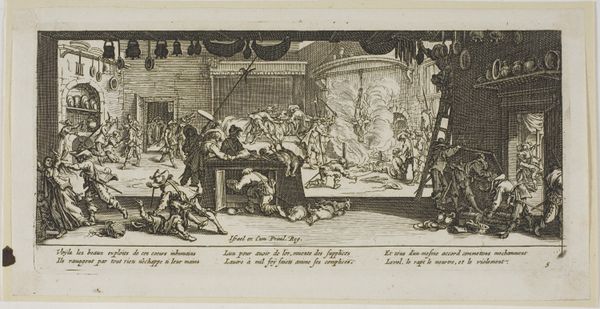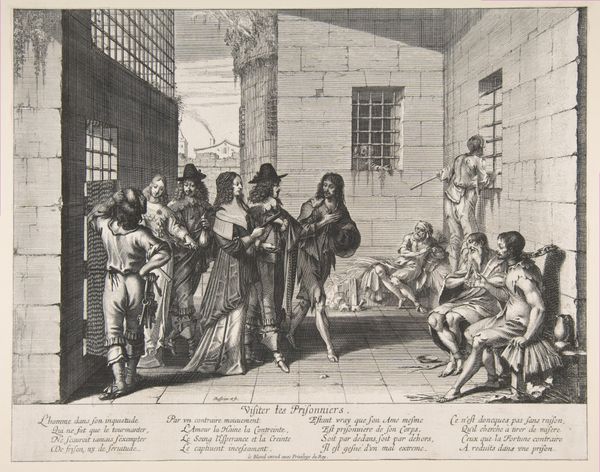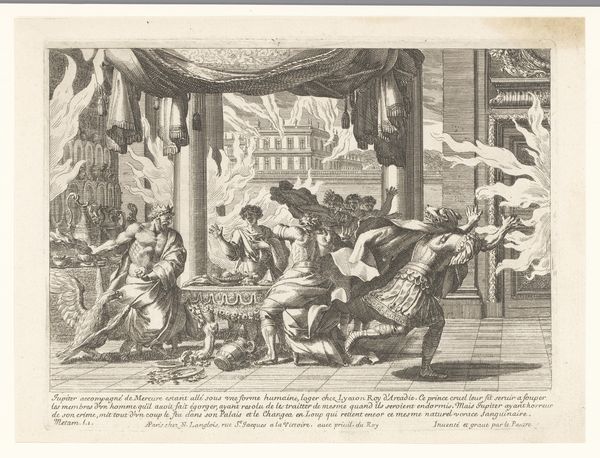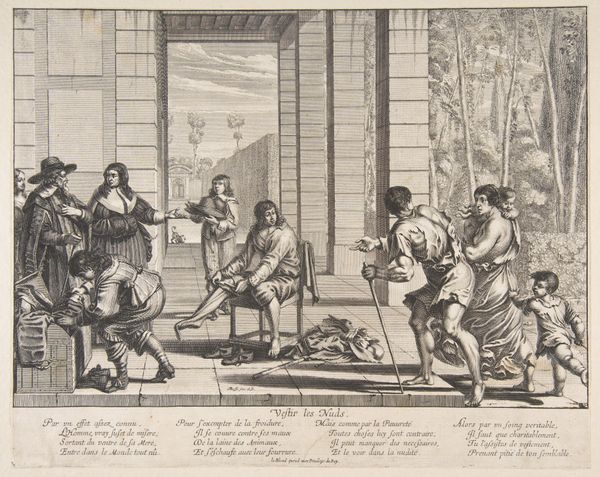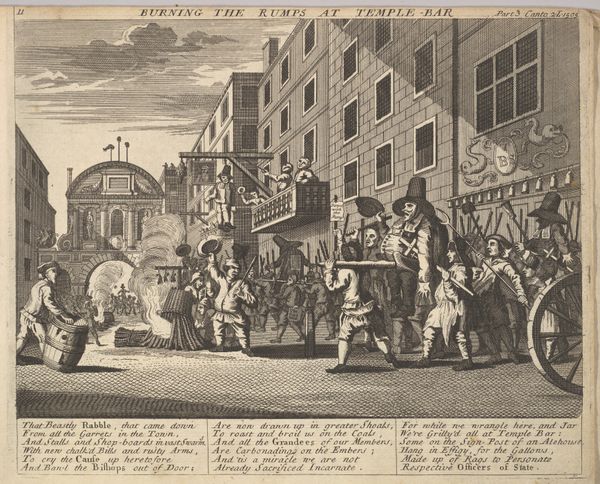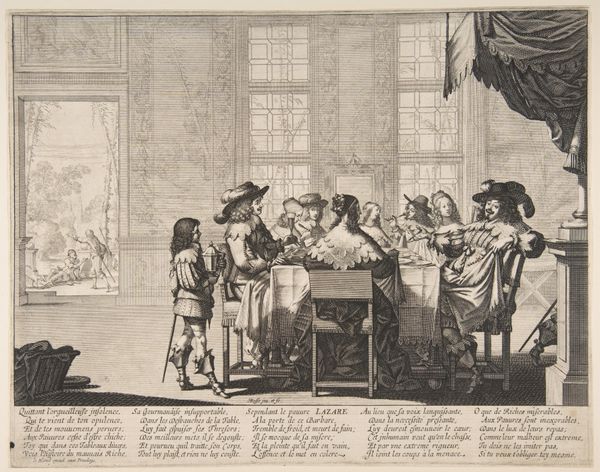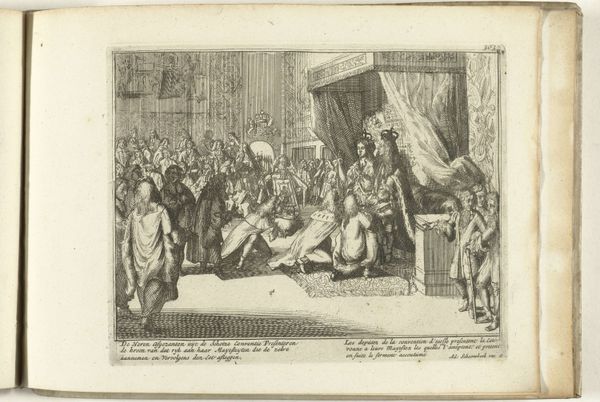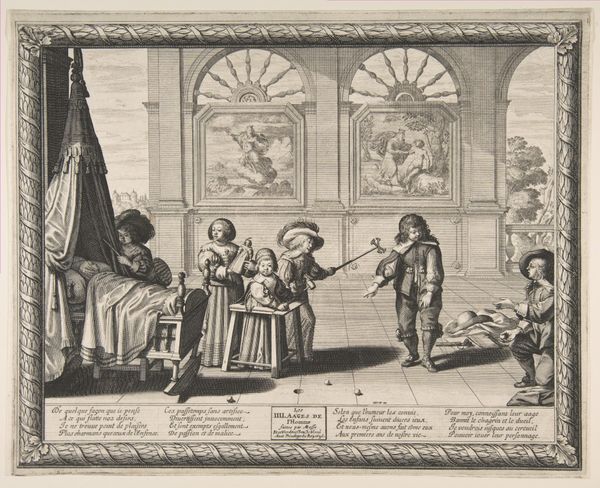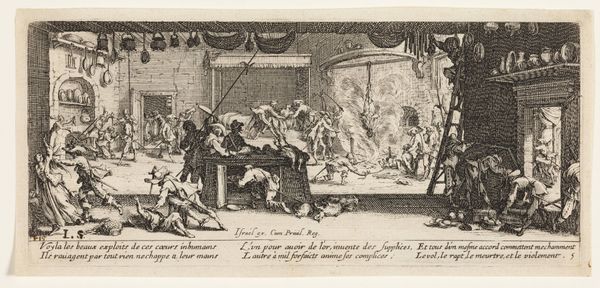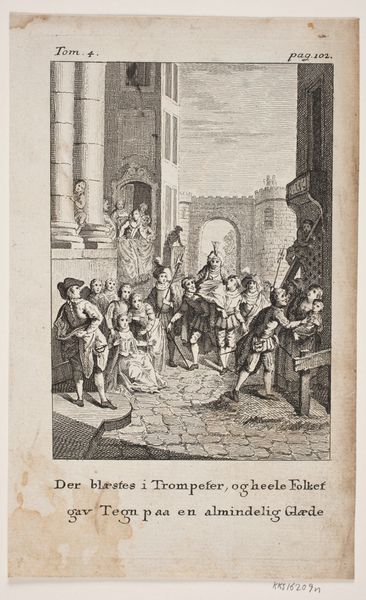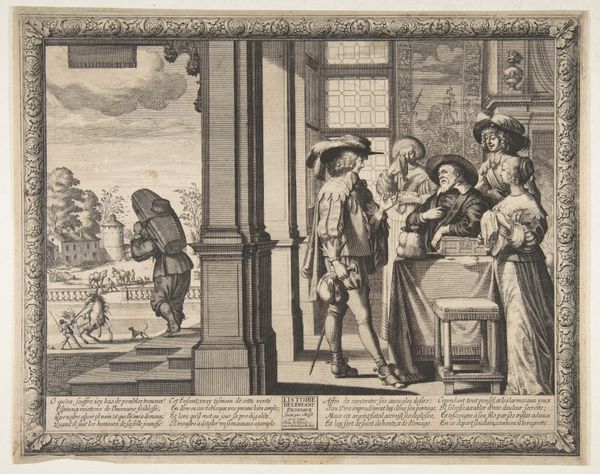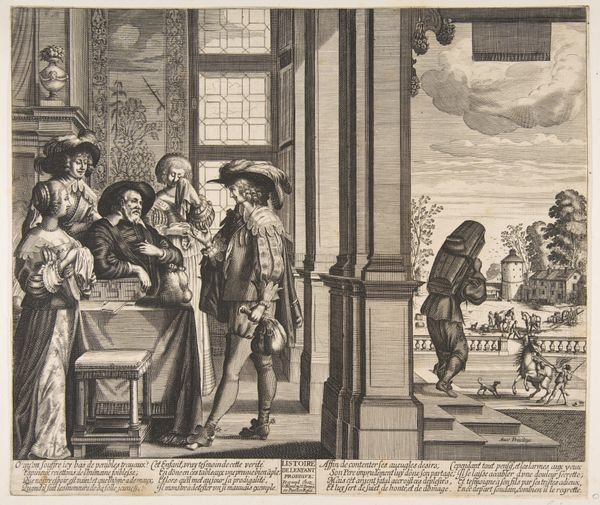
Giving Drink to the Thirsty (Donner à boire à ceux qui ont soif) 1602 - 1676
0:00
0:00
drawing, print, etching
#
portrait
#
drawing
#
narrative-art
#
baroque
# print
#
etching
#
figuration
#
child
#
men
#
genre-painting
Dimensions: sheet: 10 1/16 x 12 13/16 in. (25.6 x 32.5 cm)
Copyright: Public Domain
Curator: Abraham Bosse created this etching titled "Giving Drink to the Thirsty," sometime between 1602 and 1676. The work is presently held at the Metropolitan Museum of Art. Editor: It strikes me immediately as quite busy, almost frenetic. There's a lot happening within a relatively confined space, pulling the eye in many directions, with fine delicate lines. Curator: Bosse was very interested in social issues and how printmaking could address them. Consider how he democratized access to these social commentaries by making prints that could be widely circulated and reproduced cheaply. Think of the societal conditions enabling Bosse's focus: economic inequality, famine, and the availability of clean water, all reflected through this allegorical scene. Editor: I see how the composition organizes around contrasting planes: the foreground figures with their pleas and physical distress set against the rigid architectural backdrop. Observe the geometry: the arches, the rectangles, that contrast starkly with the curving postures of the figures, and the crisp line work in rendering those backgrounds, versus a scratchier treatment of human forms. Curator: The details surrounding the work’s production matter as much as its immediate visual impression. Bosse lived and worked during a period of significant social upheaval and economic disparity. Printmaking allowed artists to engage directly with the concerns of their time, acting almost as visual journalists, documenting and responding to immediate social issues. It offered a means of earning for a growing artist class. Editor: Indeed. While "Giving Drink to the Thirsty" presents a seemingly straightforward scene of charity, those background details invite deeper contemplation. Look how the rigid order in the architecture offers contrast, underscoring the relative chaos amongst the impoverished that he represents. The stark lighting throws this disparity into relief. Curator: And so a seemingly simple etching serves as a mirror reflecting 17th-century society's moral fabric, prompting questions about obligation and compassion—and how these played out across social classes through the availability of printed images. Editor: Looking closer, what appears at first glance as busy starts revealing intentional arrangement and symbolic weight, and this close study gives the scene and its purpose more depth than I first observed.
Comments
No comments
Be the first to comment and join the conversation on the ultimate creative platform.
